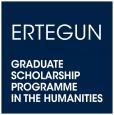Bryan Ward-Perkins
I was the first Director of the Ertegun Programme, between 2012 and 2016. When I was appointed, making Mica Ertegun's vision work seemed to me to be a challenge that I was not sure I was up to. But Mica knew better than I did, because, in reality, a project that put a group of highly intelligent young people together in a beautiful building and encouraged them to exchange ideas took off by itself. Any direction from me needed only to be of the very lightest touch - the Scholars ran themselves and took me with them. Those four years were a wonderful experience, the best of my working life, for which I am immensely grateful.
I have taught in Oxford continuously since 1981, when I was appointed a University Lecturer and a Fellow of Trinity College to teach Medieval History. Before that, my education was also at Oxford, with a doctorate in 1980. I am currently a grandly titled ‘Professor of Late Antique History’, though in reality my duties have not changed markedly over the years: teaching at undergraduate, masters and doctoral level, and contributing to the research culture and administration of both my college and the wider university.
My research interests have always been in the period that is now called 'Late Antiquity', a period that spans roughly the years AD 300 to 750, and which saw dramatic change to the ancient world: in particular, the fall of the western Roman Empire to Germanic invaders; the rise of Christianity from persecuted religion to religion of both state and people; and the extraordinary success of Islam and the Arabs, overturning the political and cultural status quo of North Africa and the Middle East. However, within this period I have worked on very different things. My first project (for my doctorate) was on the transformation of the cities of Italy, brought about by the change in patronage from the classical to the Christian, which caused the ruin of the traditional public buildings, such as the great baths and monumental fora, but also led to the construction of a dense network of churches. This work was published in my first book, From Classical Antiquity to the Middle Ages: Urban Public Building in Northern and Central Italy AD 300-850 (OUP 1984).
At the time I was also heavily involved in medieval archaeology, then in its infancy in Italy, running excavations at Pavia, Luni and Ferrara. My interest in the urban history and archaeology of Italy, led to a much wider interest in what happened to the economy of the whole Roman world (from Britain to Egypt) in the fifth to seventh centuries. My work in this area was synthesised in a book that was written for both a scholarly and a wider audience, and published in 2005, The Fall of Rome and the End of Civilization (also published by OUP). This book, which argues that the end of the Roman Empire saw a dramatic and universal drop in living standards, has been widely read (though not always agreed with!) and has been translated into eight languages, including Japanese.
More recently I have been involved in two projects centred on electronic databases. The first was with Bert Smith (one of the Ertegun Board of Directors) and was on the 'Last Statues of Antiquity', investigating the 'statue habit' of Late Antiquity - how and why cities and individuals continued to honour benefactors and dignitaries, and why they eventually stopped doing so. This created a freely-available database (http://laststatues.classics.ox.ac.uk), and a print volume, jointly edited with Bert Smith and published by OUP in 2015. The second is a very large project, funded by the European Research Council, investigating the origin and early development of the cult of Christian saints, across the full geographical range of early Christendom and involving work in six ancient languages: Armenian, Coptic, Georgian, Greek, Latin, and Syriac. This project is now in its final year, but has already launched its fully searchable database (http://csla.history.ox.ac.uk), in which are collected the thousands of texts that testify to the emergence of the belief that the saints resting in their graves can help us on our path through this mortal life.



